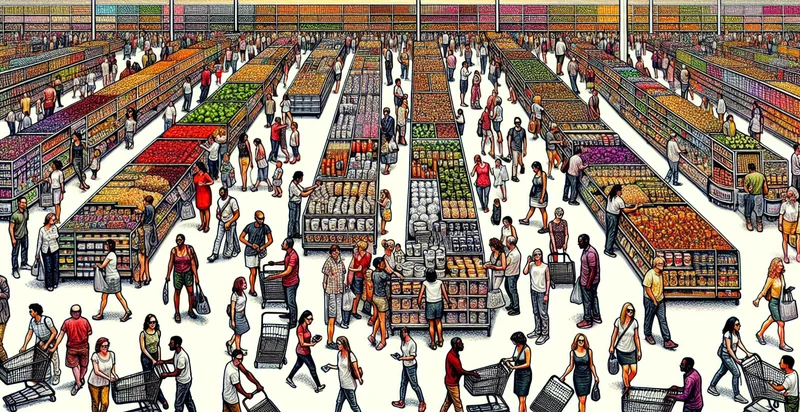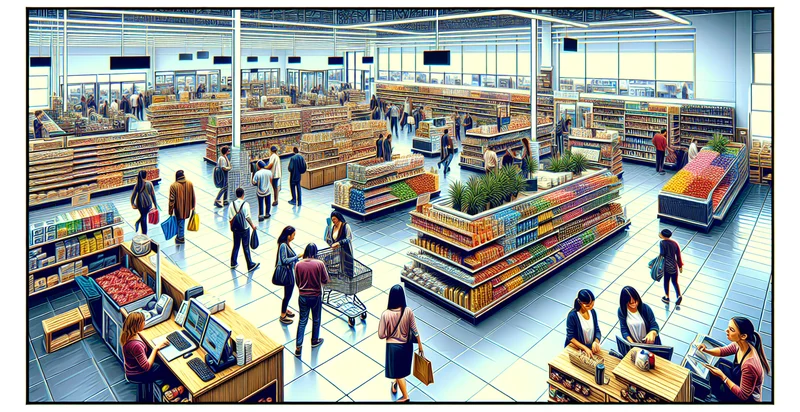Identify supermarket shoppers count
using AI
Below is a free classifier to identify supermarket shoppers count. Just upload your image, and our AI will predict the number of shoppers in each product category - in just seconds.

Contact us for API access
Or, use Nyckel to build highly-accurate custom classifiers in just minutes. No PhD required.
Get started
import nyckel
credentials = nyckel.Credentials("YOUR_CLIENT_ID", "YOUR_CLIENT_SECRET")
nyckel.invoke("supermarket-shoppers-count", "your_image_url", credentials)
fetch('https://www.nyckel.com/v1/functions/supermarket-shoppers-count/invoke', {
method: 'POST',
headers: {
'Authorization': 'Bearer ' + 'YOUR_BEARER_TOKEN',
'Content-Type': 'application/json',
},
body: JSON.stringify(
{"data": "your_image_url"}
)
})
.then(response => response.json())
.then(data => console.log(data));
curl -X POST \
-H "Content-Type: application/json" \
-H "Authorization: Bearer YOUR_BEARER_TOKEN" \
-d '{"data": "your_image_url"}' \
https://www.nyckel.com/v1/functions/supermarket-shoppers-count/invoke
How this classifier works
To start, upload your image. Our AI tool will then predict the number of shoppers in each product category.
This pretrained image model uses a Nyckel-created dataset and has 13 labels, including 1-5, 101-150, 11-20, 151-200, 201-300, 21-30, 301-400, 31-50, 401-500 and 500+.
We'll also show a confidence score (the higher the number, the more confident the AI model is around the number of shoppers in each product category).
Whether you're just curious or building supermarket shoppers count detection into your application, we hope our classifier proves helpful.
Related Classifiers
Need to identify supermarket shoppers count at scale?
Get API or Zapier access to this classifier for free. It's perfect for:
- Customer Flow Analysis: By utilizing the shoppers count identifier, supermarkets can analyze peak shopping times and days. This data enables better staff scheduling and inventory management, ensuring that customer needs are met during busy periods.
- Marketing Campaign Effectiveness: Integrating the shoppers count with marketing initiatives allows businesses to assess the effectiveness of promotions. Comparing shopper counts before, during, and after campaigns helps determine ROI and areas for improvement.
- Layout Optimization: The function can track how customer layout impacts shopper flow within the store. By analyzing traffic patterns, managers can optimize product placements and store designs to enhance shopping experiences and drive sales.
- Enhanced Customer Experience: Understanding the shopper count in real-time allows for immediate adjustments to improve customer experience, such as opening additional checkout lines during peak periods. This responsive approach can reduce wait times and increase customer satisfaction.
- Queue Management: The shoppers count can help in managing queues at checkout areas. By analyzing the data, stores can implement changes to layout, add staff, or utilize technology for more efficient queue management, thus reducing churn.
- Safety and Compliance Monitoring: During health crises or in compliance with regulations, the shoppers count function can monitor store occupancy levels. This ensures supermarkets adhere to safety guidelines and provides a secure shopping environment for customers.
- Stock Replenishment Decisions: By correlating shopper counts with purchase data, supermarkets can forecast demand for specific products. This leads to timely replenishment, reducing stockouts, and minimizing waste with more accurate inventory management.


